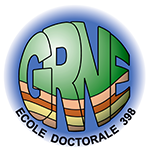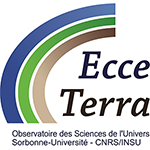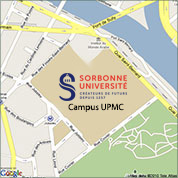Séminaire ISTeP - Philippe Agard
(ISTeP)
Subduction in fancy: du scalp (initiatique?) des jeunes slabs
Understanding subduction rheology in both space and time has been a challenge since the advent of plate tectonics. We herein focus on "subduction infancy", that is the first ~1-5 My immediately following subduction nucleation, when a newly born slab penetrates into the upper plate mantle and heats up.
The only remnants of this critical yet elusive geodynamic step are thin metamorphic soles, commonly found beneath pristine, 100-1000 km long portions of oceanic lithosphere emplaced on continents (i.e., ophiolites).
We show how, during subduction infancy, transient mechanical properties of the mantle and crust across the subduction plate interface control and hinder the penetration of tectonic plates into the mantle, and how this results in strong peaks of resistance and even slicing of their surface — leaving behind thin, chopped-off metamorphic slivers.
These findings constrain the mechanical behaviour of the subduction plate interface (with implications for coupling processes and earthquake generation) as well as the properties of the crust and mantle. They also highlight the role of fluids in enabling subduction to overcome this early resistance.
15/01/2016 à 12h30, Salle Fourcade (Tour 55-56, 4ème étage)
Egalement dans la rubrique
- Séminaire ISTeP - Francisco Ciocci
- Séminaire ISTeP - Pierre Beck
- Séminaire ISTeP - Irene Molinari
- Séminaire ISTeP - Galen Halverson
- Séminaire ISTeP - Tony Watts
- Séminaire ISTeP - Pierre Olivier Bruna
- Séminaire ISTeP - Pierre Sansjofre
- Séminaire ISTeP - Benjamin Malvoisin
- Séminaire ISTeP - Marianne Métois
- Séminaire ISTeP - Benjamin Guillame
Chiffres clés (Mars 2025)
L'ISTeP comprend 131 membres dont :
Permanents (66)
- Professeurs : 17 (+2 PAST)
- Maîtres de conférence : 26
- Directeurs de recherche CNRS : 1
- Chargés de recherche CNRS : 1
- ITA : 19
Personnels non permanents (65)
- Collaborateurs bénévoles / émérites : 17
- Chaire de professeur junior : 1
- Enseignants-chercheurs contractuel : 2
- 1 MCF accueil en délégation
- ATER et Post-Docs : 9
- Doctorants : 32
- ITA-BIATSS : 3





